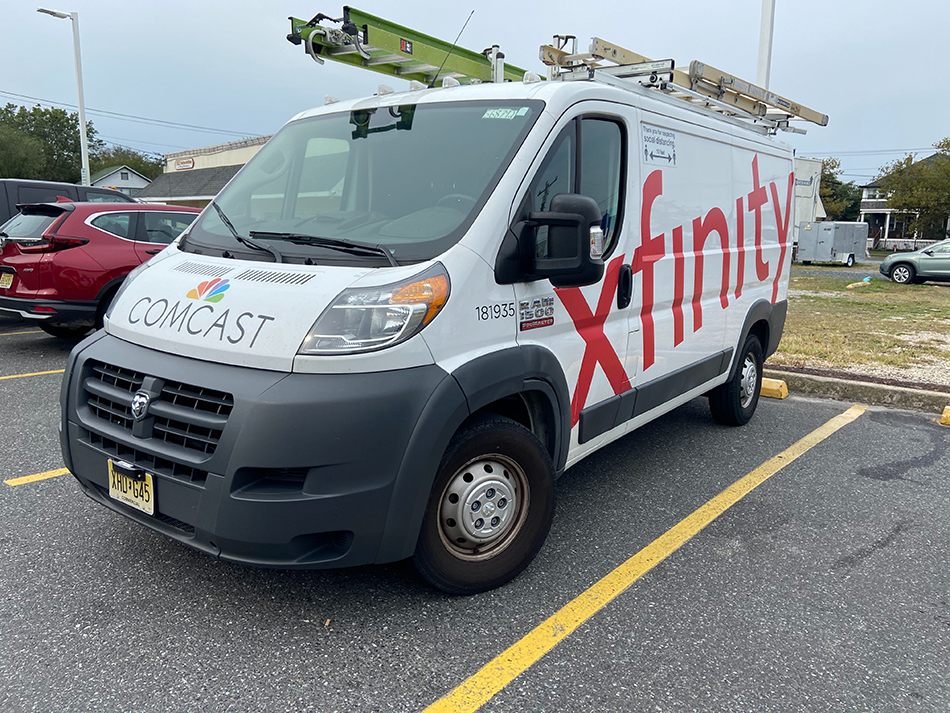How Long Is Comcast’s Broadband Growth Runway, Really?
Cable CEO Dave Watson says fundamentals still strong; analysts point to possible weakness in Q4

Comcast’s Q3 performance may turn out to be a bit of a double edged sword after all — on one hand, its 300,000 broadband subscriber additions came in at or above most analyst expectations, but its full year guidance implies that the fourth quarter may be a little worse than expected.
Analysts initially cheered when Comcast said it had added 300,000 broadband subscribers in Q3, slightly better than consensus estimates of a gain of 296,000 customers. Strong gains in revenue (up 7.4%) and cash flow (up 10.3%) added to a feeling that perhaps the expected broadband slowdown won’t be as severe as earlier expected.
Comcast cable CEO Dave Watson added to those good feelings on the Q3 earnings conference call Thursday morning, telling analysts that he sees a strong growth trajectory ahead.

“The fundamentals of the business are very strong and there’s a very long runway of growth for broadband,” Watson said on the call. “We haven’t changed our view on the long-term trajectory of the connectivity business. I’m just as confident and optimistic about the prospects of this business than I’ve ever been.”
Watson pointed to Comcast’s past consistent performance — adding 1 million or more broadband customers each year for the past 20 years — and noted this year is no different. For the first nine months of 2021, Comcast has added a total of 1.1 million broadband customers, behind the 1.4 million added during the same period in 2020, but ahead of 2019’s nine-month pace of 963,000 additions.
“Our focus has not wavered,” Watson said. “While current visibility and overall current activity creates a little bit of modest risk, we still believe full-year net adds will be around 2019 levels.”
Watson was quick to point out that 2019 was Comcast’s second-strongest year in terms of broadband growth (2020 was No. 1), so to return to that pace points to continued momentum for the service.
The smarter way to stay on top of the multichannel video marketplace. Sign up below.
But Watson also noted that Comcast is adding fewer low-income broadband customers, which some analysts found surprising given government programs like the Emergency Broadband Benefit program (EBB), which subsidizes high-speed internet service for qualifying homes. And some pointed out that using 2019 as a goal implies that Q4 additions will be a lot lower than that same period two years ago.
Comcast added about 1.4 million broadband subscribers in 2019, so hitting that target implies that the cable company will add about 292,000 high-speed internet subscribers in Q4 2021, according to MoffettNathanson principal and senior analyst Craig Moffett. That’s a big departure from Q4 2019, when the company added 442,000 broadband customers, and implies that the momentum may not be as strong as they think.
In a research note, Moffett wrote that in the “middle six months” of 2021 (basically Q2 and Q3) Comcast’s broadband subscriber growth was actually stronger than in the same period in 2019. According to Moffett, Comcast added 654,000 broadband customers in Q2 and Q3 this year, and 589,000 subscribers in Q2 and Q3 of 2019.
Whether that slower implied Q4 growth (about 292,000 additions or greater) is due to “continued weakness in new household formation, slower incremental penetration gains or simply botched messaging is unclear,” according to Moffett.
Barclays Group media analyst Kannan Venkateshwar also noted that the 2021 guidance “implies that Q4 is trending significantly lower than 2019 levels,” and was somewhat concerned about the slowdown in low-income customers. In a research note, Venkateshwar wrote that decline implies that the low-income segment “contributed more than usual to growth over the last year due to government support programs, something we have flagged as a risk for some time.”
The fact that the slowdown is largely on account of slower origination rather than higher churn means that the competitive impact of telecom isn’t being felt yet.
— Kannan Venkateshwar, Barclays Group
The Barclays analyst added that Comcast’s record low churn means that the slowdown isn’t due to competition, which could change over time.
“The fact that the slowdown is largely on account of slower origination rather than higher churn means that the competitive impact of telecom isn’t being felt yet,” Venkateshwar wrote. “This, along with the fading impact of macro support programs, means that 2022 net adds may be further below the 2019 level than 2021.”
Watson wouldn’t give 2022 guidance on the call, again pointing to strong fundamentals and the continued, consistent momentum of the broadband business.
But Comcast chairman and CEO Brian Roberts said the reduction in churn is proof that broadband is a very stable business.
“That’s what’s so great about the 32 million broadband customers that we have — we have a recurring business,” Roberts said on the call. “Maybe there was a pull forward, maybe there's a slowdown, time will tell. We’re looking at how we grow EBITDA, how do we grow margins, how do we maintain and offer more product connectivity, what more can we do with broadband, what will broadband be in the next five years."
“It’s not some change in market conditions that we’ve all been reading about,” Roberts continued. “While it may be coming and there may be some of that, I actually think it’s the disruption of the pandemic coupled with a large percentage of Americans [that] have broadband. The question for us going forward is how do we continue to grow the value of that broadband and obviously therefore grow the value to our shareholders.”
Investors appeared a little confused. Comcast stock was down about 5% ($2.55 each) in early trading Thursday to $49.89 per share, but rebounded later in the day to $52.74 (up 1%). As of 12:26 p.m. Oct. 28, the stock was trading at $52.26, down less than 1% or 18 cents per share.
While broadband concerns are likely driving confusion, those fears could be all for naught. Moffett noted in his report that Comcast is notorious for reporting results that are “almost always precisely as expected, plus a smidge for good measure.”
So any fear of an even deeper slowdown could simply be a case of the “botched messaging” that led up to today’s Q3 pleasant surprise.
Mike Farrell is senior content producer, finance for Multichannel News/B+C, covering finance, operations and M&A at cable operators and networks across the industry. He joined Multichannel News in September 1998 and has written about major deals and top players in the business ever since. He also writes the On The Money blog, offering deeper dives into a wide variety of topics including, retransmission consent, regional sports networks,and streaming video. In 2015 he won the Jesse H. Neal Award for Best Profile, an in-depth look at the Syfy Network’s Sharknado franchise and its impact on the industry.

